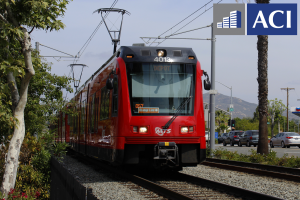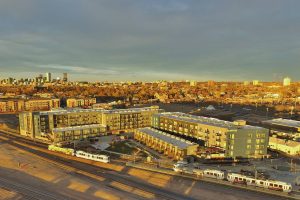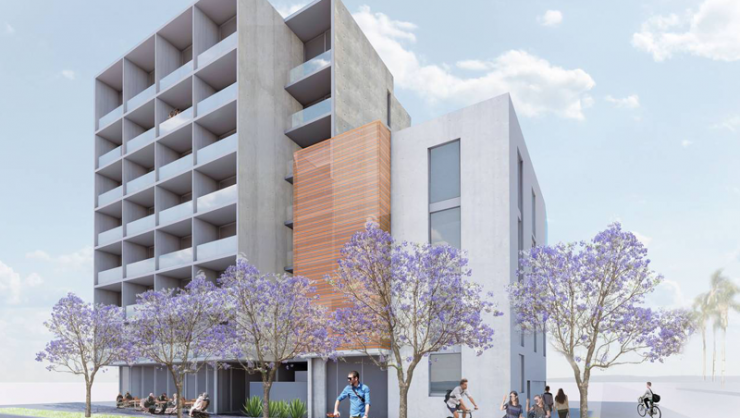Citing affordability and efficiency, developer Jonathan Segal revealed a plan to construct a 35-unit apartment complex in the San Diego neighborhood of Little Italy with the absence of a feature generally expected of a multifamily property, parking spaces.
Although this is not a new trend, it is one of the first for the San Diego area that has been widely reported. As we covered previously in a special report, many developers and renters see the reduction or removal of parking in some urban cities as a natural step towards embracing public transportation and other greener options for travel. For developers in particular, avoiding the costs of digging underground parking structures or losing in some cases as much as 350 square feet of real estate space translates to more affordable and enticing rents for consumers.
“It’s the future” explains Segal, the mastermind behind the Little Italy proposal recently explained to the Wall Street  Journal, “There’s a strong demand for people who want to rent units that are efficient”. The report further suggests that with the absence of parking costs, rents at the building could be reduced to $1,300-$1,500 a month “barely half that of comparable apartments nearby.”
Journal, “There’s a strong demand for people who want to rent units that are efficient”. The report further suggests that with the absence of parking costs, rents at the building could be reduced to $1,300-$1,500 a month “barely half that of comparable apartments nearby.”
This effort to curb parking spaces in favor of public transportation or ride-share alternatives is not a new concept, but it is something that has received more coverage in recent years. ACI previously reported on the Parkmerced apartment project currently being proposed in San Francisco. This innovative building has proposed offering tenants $100 a month in transportation credit and Uber-friendly waiting areas to promote a car-free, pedestrian focused zone for residents. This trend isn’t even limited to the state of California. The Wall Street Journal reports that many other states have begun to lead a charge for car-lite or free areas. “Nashville is considering proposals to convert parking facilities to housing or other uses.” Esther Fung explains in her report, just paragraphs after discussing the Little Italy project currently proposed, “In Oregon, the Transportation Planning Rule requires state, regional and local jurisdictions to reduce parking spaces per capita and improve opportunities for alternatives to the automobile.”
 So does this trend suggest that investors should re-double their efforts to convert their properties into car-free zones? Perhaps not so fast. Consider first where your property exists in relation to public transportation services. Properties like Parkmerced would thrive in a car-lite environment due to close access to San Francisco’s renowned BART metro system or a pool of ride-share enthusiasts. For locations like San Diego or more rural locations finding simple public metro systems can occasionally be a very long walk. In addition, renters hoping to score lower rents in new Little Italy project may end up paying more from storing their vehicle at a parking garage or seeking parking blocks away from their home. The Esther Fung’s article acknowledges this issue by citing the concerns of many local residents who were informed of the proposed construction. Susan Keating, an area resident interviewed by Fung, found the proposed building concerning due to “the possibility these micro units might be rented out to people who still drive and they might drive round and round the block looking out for parking more than for pedestrians.”
So does this trend suggest that investors should re-double their efforts to convert their properties into car-free zones? Perhaps not so fast. Consider first where your property exists in relation to public transportation services. Properties like Parkmerced would thrive in a car-lite environment due to close access to San Francisco’s renowned BART metro system or a pool of ride-share enthusiasts. For locations like San Diego or more rural locations finding simple public metro systems can occasionally be a very long walk. In addition, renters hoping to score lower rents in new Little Italy project may end up paying more from storing their vehicle at a parking garage or seeking parking blocks away from their home. The Esther Fung’s article acknowledges this issue by citing the concerns of many local residents who were informed of the proposed construction. Susan Keating, an area resident interviewed by Fung, found the proposed building concerning due to “the possibility these micro units might be rented out to people who still drive and they might drive round and round the block looking out for parking more than for pedestrians.”
It may be quite some time before we can gauge the success of a car-lite multifamily project in San Diego. However, what we can definitely acknowledge is that such projects are here and only getting started in influencing the construction of future buildings.
Esther Fung’s article “More Developers Kick Parking Lots to the Curb” can be found HERE.



